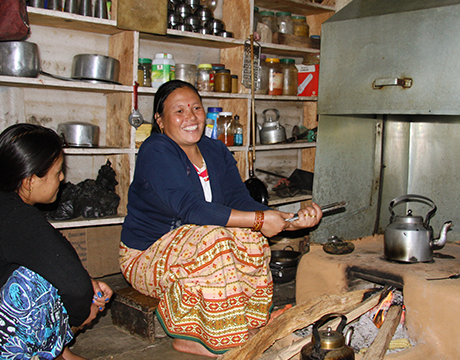A Better Way Out
A Better Way Out


Around half the people in the world and up to 90 percent of rural people in developing countries cook with fuels that expose their households to high levels of indoor air pollution. Often this basic and necessary daily activity generates indoor air pollution levels more than 100x what is deemed acceptable by the World Health Organization. In turn, household individuals' frequent exposure to fumes, smoke and particulates can have devastating consequences: alarmingly, indoor air pollution is an attributed cause of nearly two million deaths per year.
Smoke hoods are one solution to pervasive indoor air pollution. But as international development and technology charity Practical Action discovered, designing smoke hoods is only one step towards successfully combatting the health consequences of stove-based air pollution. Through its "Healthy Hoods" campaign in Nepal, Practical Action found that the uptake and use of the smoke hoods was limited by a lack of community awareness about the problem of indoor air pollution.
Practical Action realized that community engagement and market building were equally essential to the success of its smoke hoods initiative. The organization invested significant time and resources into building a health awareness campaign and to facilitating families' access to small loans to pay for the smoke hoods.
This case study explores Practical Action's approach to designing an effective smoke hood in partnership with Bundeswehr University; it also examines its far more-time intensive campaign to raise community health awareness and set up local market conditions to ensure the success of its product.
Read the full case study.
Fall 2013 ?




